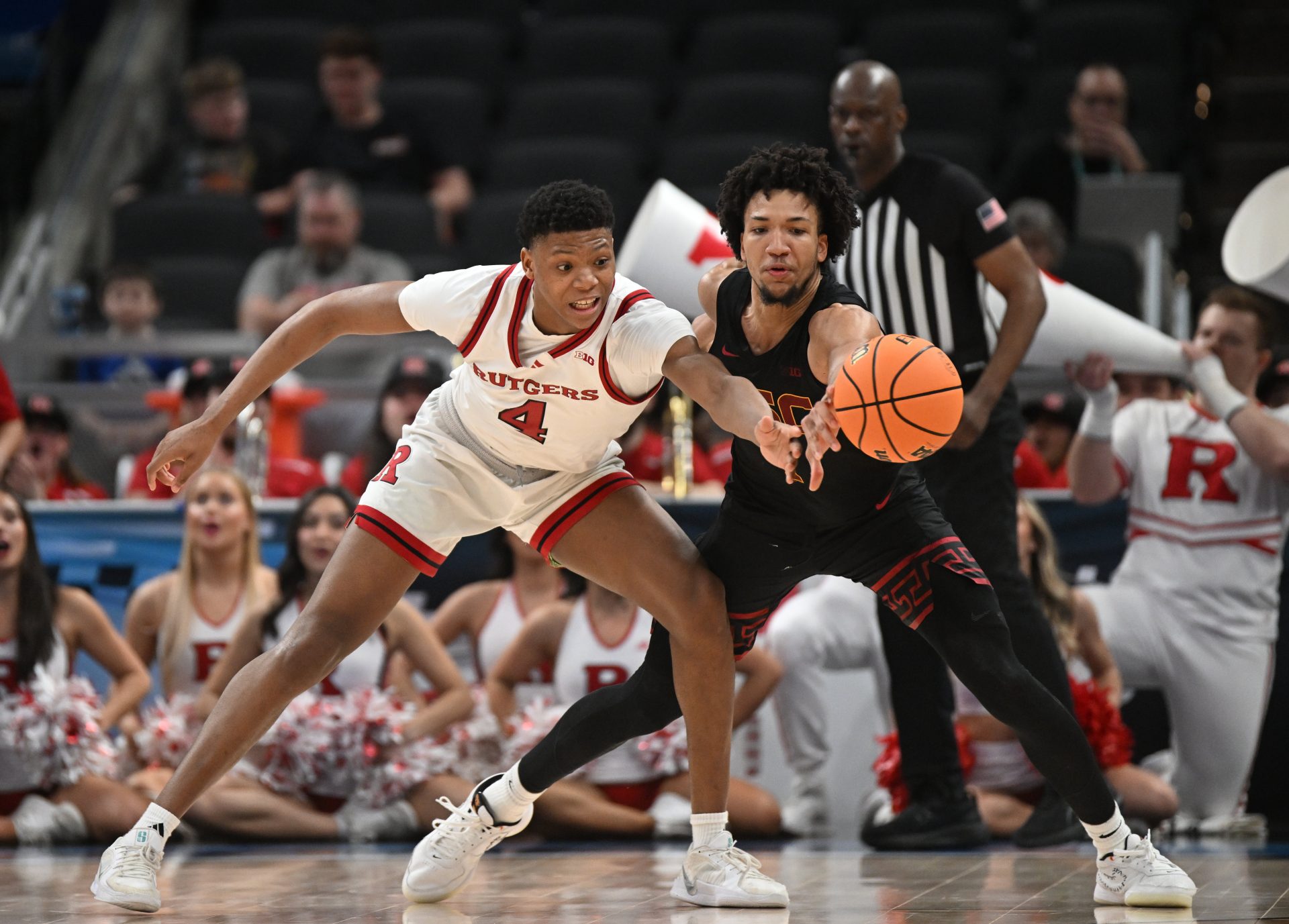As Rutgers forward Ace Bailey prepares for the 2025 NBA Draft as a projected top-three pick, basketball fans are debating whether the 6’10” prospect should embrace a complementary role rather than pursuing comparisons to Kevin Durant.
The Case Against Kevin Durant Comparisons
While many compare Bailey to Phoenix Suns player Kevin Durant, his college performances hint he may fit into a different position. While averaging 34.8 minutes, 17.6 points, and 7.2 rebounds at Rutgers, his work as a primary playmaker worried scouts. Bailey would be better off as a supercharged 3&D wing instead of a KD facsimile.
He converted just 61% of his shots near the rim, an average for his height and position, and ended up with a negative ratio of assists to turnovers on the year.
One Reddit user highlighted the contradiction in draft analysis, noting: “How can you question Ace Bailey when the real 3&D prospect VJ Edgecombe is the one getting comps to Dwade and he literally has no handle or playmaking ability.”
This observation points to the inconsistency in how prospects are evaluated, as Edgecombe receives Dwyane Wade comparisons despite similar limitations in ball-handling and self-creation.
Looking at his shooting locations makes it easier to see that Bailey struggles to create shots. Over half of his scoring came from jump shots, most of which were tried from mid-range, not from the three-point line or in close to the basket.
Because he is not a great ball-handler, he is unable to go past guards on a regular basis and help his teammates get easy shots.
The inconsistency in draft evaluation becomes even more apparent when examining both prospects’ limitations. As one observer noted:
“There are rightfully a ton of questions about VJ’s self-creation and handle. And yet Ace is still significantly worse at both skills.”
The results agree with expert reports on Edgecombe making less than 50% of his half-court shots around the basket, even as he fails to take care of the ball when he moves left. Bailey, in contrast, stands out for his much worse areas of footwork and steering the basketball. The disparity in criticism suggests that Bailey’s physical tools may be masking equally concerning skill gaps.
Why a 3&D Role Makes Sense
The statistical evidence strongly supports Bailey functioning as an elite complementary player rather than a primary option. Nearly 70% of his three-point attempts came off catch-and-shoot situations, where he shot an impressive 39% from beyond the arc.
He also converted 41% of his off-screen three-pointers and recorded 24 dunks in just 30 games, demonstrating his effectiveness in structured offensive systems.
Bailey’s defensive impact provides another compelling argument for the 3&D role. He posted a 4.3% block rate and 1.7% steal rate while holding opponents to just 41% shooting at the rim and 31% on contested jumpers.
His 7.2 rebounds per game and active defensive rebounding (5 defensive rebounds per game) showcase his versatility on that end of the floor.
As one fan noted: “It would behoove him to play like ’22 Wiggins instead of these jumbo wing scorers.” This reference to Andrew Wiggins’ transformation with the Golden State Warriors illustrates a successful template for Bailey’s development.
KEEP READING: 2025 NBA Draft: Would Drafting Ace Bailey Be a Fit or a Gamble Next to Brandon Miller?
Wiggins evolved from an inefficient primary scorer to a championship-contributing two-way wing who maximized his athleticism within a defined role.
Bailey’s path to NBA success may depend more on self-awareness than raw talent. While his scoring ability keeps him in the top-three conversation, embracing a complementary role could accelerate his impact and longevity at the professional level.
College Sports Network has you covered with the latest news, analysis, insights, and trending stories in football, men’s basketball, women’s basketball, and baseball!


